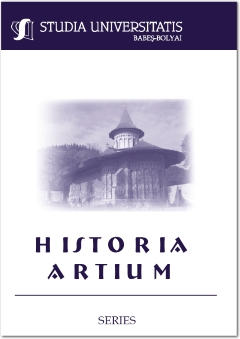DATE NOI PRIVIND CONSTRUCŢIA BISERICII SFÂNTUL IOSIF DE CALASANZ DIN CAREI
NEW DATA REGARDING THE CONSTRUCTION OF THE SAINT JOSEPH CALASANZ PIARIST CHURCH IN CAREI
Author(s): Júlia BaraSubject(s): Fine Arts / Performing Arts
Published by: Studia Universitatis Babes-Bolyai
Keywords: Carei; Károlyi family; patronage; Piarist Order; votive church; Franz Sebastian Rosenstingl; plans; sketches; plaster models; Austrian masters; Franz Sieber.
Summary/Abstract: New Data Regarding the Construction of the Saint Joseph Calasanz Piarist Church in Carei. The Piarist Church from Carei, with its unusual ground plan and monumental design, can be considered one of the most important examples of late Baroque ecclesiastical architecture from the region, the so-called Partium. It was built between 1769 and 1779 in the domain centre of the Károlyi family. The financial situation and the ambitions for representation of Antal Károlyi, the patron of the church played a decisive role in the history of the building. Besides the cover of the costs, Antal Károlyi supervised and organized the construction and the interior arrangement of the church. His financial situation permitted to engage an acknowledged Austrian architect and academic professor named Franz Sebastian Rosenstingl. Rosenstingl had a very impressive and multilateral oeuvre; he made plans for buildings, gardens, ecclesiastical furnishing and ephemeral constructions, but he worked also as a painter and he is the author of a treatise on architecture. Beside the plans of the building of the Piarist Church in Carei, he made sketches and even plaster models for the constructions of the altars and pulpit, for different decorative ornaments of the interior and for the statues of the tower. His drawings, delineations were probably sent from Vienna to Carei, were the local executor-architects Franz Sieber and his son, following his instructions, supervised and directed the work of the cabinet-makers, stone-dressers, stucco-makers and gold-palter masters. These masters had an important role as well. Some of them – like the stucco-maker and the gold-platter master – came from Vienna as well and was recommended to the count by Rosenstingl. The arrangement of the interior of this church deserves special attention. The most important objects of the interior are probably the seven baroque altars, painted between 1779 and 1780 by a well-appreciated Austrian painter, Johann Ignaz Cimbal.
Journal: Studia Universitatis Babes Bolyai - Historia Artium
- Issue Year: LVI/2011
- Issue No: 1
- Page Range: 59-77
- Page Count: 19
- Language: Romanian

